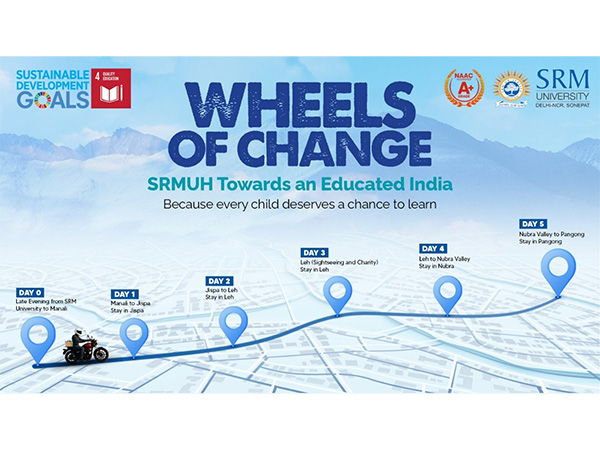By Puneet Dua, Cmo And Co-Founder Sportsbaazi
New Delhi [India], July 1 (ANI): Marketing once thrived on spectacle. It was about turning heads, stopping thumbs, and producing content worthy of a second glance. And for a while, especially in fashion and ecommerce, it worked. The right visual, the right vibe, the right influencer could drive a conversion. But that playbook doesn’t scale anymore. Not in a world where users are savvier, scrutiny is sharper, and surface-level gloss just doesn’t hold up under pressure.
We’ve entered an era where attention might win you the click, but only credibility earns you the return.
From Vanity Metrics to Value Loops
Fashion brands were the original masters of digital theatre. They understood momentum, mood, and the metrics that made investors smile. But performance eventually caught up to performance marketing. CACs climbed. Loyalty slipped. Dopamine-driven design met the limits of user patience.
For high-growth businesses, especially in sectors like sports trading, fintech, SaaS, and healthtech, this became the wake-up call. When you strip away the dazzle, what remains? If your funnel leaks after the landing page, the cost of acquisition becomes a liability, not an investment.
The insight is simple but sobering: brand is not equal to business. And impressions are worthless if they don’t convert into experience.
What We Should Still Steal from Fashion
To be clear: aesthetic isn’t dead. Fashion taught us urgency, emotion, and how to spark belief. That toolkit still matters. But the best functional brands today use it differently. They wrap storytelling around systems. They lead with insight, then deliver with rigour.
Look at how fantasy sports gaming platforms craft immersive onboarding journeys. From the first opinion traded, users encounter both storytelling and strategy, price cues, exit options, and trend visualisations. These aren’t gimmicks; they’re clarity engines.
From Campaigns to Systems
Real marketing starts after the click. When the landing page either fulfils the promise of the ad or doesn’t. When onboarding, either empowers a user or loses them in the first 30 seconds. The brands that scale don’t just push products. They build self-sustaining loops, where marketing feeds product, product feeds usage, and usage feeds retention.
And this matters more than ever in the skill-based gaming ecosystem. You’re not asking users to watch. You’re asking them to think, decide, and engage. That requires clarity, not chaos.
Signals, Tells, and the Advantage of the Read
In both sport and marketing, the winners don’t rely on brute force; they rely on pattern recognition.
Andre Agassi beat Boris Becker’s serve not with power, but by decoding a signal: the angle of Becker’s tongue. Sachin Tendulkar developed a subtle system to decode Chris Cairns’ slower deliveries and share that information instantly with Dravid, left hand for outswing, right for inswing.
Nike built an ecosystem around behaviour. Nike Run Club doesn’t just track runs, it adapts to them. That feedback loop is why app users spend 3x more than retail-only buyers.
Spotify doesn’t just recommend music, it interprets behaviours to do so. A user skipping a track, replaying another, or even adjusting the volume becomes a signal. These cues feed into an algorithm that recalibrates profiles. The result? Discover Weekly, that’s why users who engage with it once are 60% more likely to come back.
Each of these examples shows what marketing must become: an interpretive system. A machine that listens, learns, and responds in real time.
Marketing That Thinks Like Product
Growth isn’t a series of stunts; it’s a system of sync. When your messaging matches your delivery. When your CX, CRM, ads, and analytics all speak the same language. That’s not just good branding. That’s operational excellence.
And it’s the only way to win in categories like sports trading, where you’re not offering entertainment, you’re offering engagement with consequence. Users don’t want noise. They want control. They want context. They want to play a game that puts them in control, where skill shapes the outcome, the experience is rich, and every decision feels meaningful.
Final Thought: Don’t Just Make the Sale, Make the System
Marketing isn’t about going viral. It’s about going the distance. The modern marketer doesn’t wait for performance reports; they predict them. They build feedback loops that reward insight. They don’t just chase attention; they convert it into action.
Because in the long run, it’s not the campaign that gets you noticed, it’s the system that gets you remembered. The flash of acquisition can win you a crowd, but only retention builds a business. The brands that scale sustainably aren’t chasing the next eyeball; they’re earning the next interaction. They don’t just optimise for first clicks; they design for second, third, and thirtieth sessions. Growth doesn’t come from noise. It comes from knowing your user, reading the signal, and building an experience they choose to return to, again and again. (ANI)
Disclaimer: Puneet Dua is the Chief Marketing Officer and Co-Founder at SportsBaazi. The views expressed in this article are his own.
Disclaimer: This story is auto-generated from a syndicated feed of ANI; only the image & headline may have been reworked by News Services Division of World News Network Inc Ltd and Palghar News and Pune News and World News
HINDI, MARATHI, GUJARATI, TAMIL, TELUGU, BENGALI, KANNADA, ORIYA, PUNJABI, URDU, MALAYALAM
For more details and packages
















